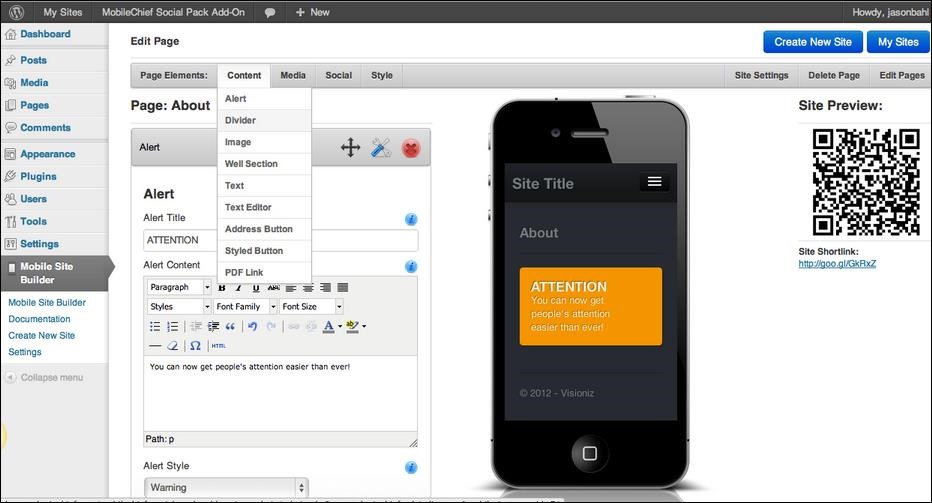

After clicking Content Aware>Add New, the plugin will walk you through its features by teaching you how to create a custom sidebar. You will find it in your left-hand dashboard menu labeled Content Aware. Once the plugin is installed and activated, a separate area within your dashboard will appear for creating and configuring your new sidebars.

#Wp mobile contact bar free
This article focuses on the free version. Growing in popularity with 40,000 active installations, both the free and paid versions of this plugin cover the features of Custom Sidebar and more. You can also set rules per screen size, hiding or shortening certain elements on mobile devices.Īt the time of this review, this plugin, version 3.2.3, was tested up to WordPress 5.4.2 and is updated every 1-3 months.Ĭontent Aware Sidebars - Unlimited Widget AreasĬontent Aware Sidebars is another powerful plugin for creating custom sidebars. page, post, specific categories, etc.) and where on the page it will be displayed (e.g. Once a new sidebar is created and elements have been added, you must indicate where the plugin will live (e.g. Presenting the same interactive creation functionality as the built-in WordPress widget feature.

After you create a new sidebar using the Create a new sidebar button, simply drag-and-drop widgets from the available widget area over to your newly created custom sidebar. This is probably by design, allowing you to quickly learn the plugin and set up custom sidebars with ease. Save for a slightly dark gray background and the new Create a new sidebar button, the area is virtually unchanged. When you navigate to the Widgets panel in your WordPress dashboard, you’ll quickly notice that the sidebar configuration area looks almost identical to the built-in WordPress version. Once installed and activated, the plugin will gently inform you of the new plugin settings under Appearance>Widgets.
#Wp mobile contact bar archive
Custom Sidebars integrates seamlessly with the WordPress built-in widget area and allows you to create and display multiple custom sidebars on a post, page, category, archive page, or post type. With over 200,000 installations, this free, intuitive plugin is a favorite among WordPress users. Custom Sidebars - Dynamic Widget Area Manager There are many custom sidebar plugins available, but here are two popular options we tested for your review. You can also utilize custom sidebar plugins to create and add unique sidebars per a particular page, post, or category.

Content Aware Sidebars - Unlimited Widget AreasĮnjoy free, secure hosting optimized for your WordPress website with our WordPress Hosting plans.Custom Sidebars - Dynamic Widget Area Manager.Create Custom Sidebar Navigation Menus Per Page.Add a Navigation Menu to Your Sidebar in WordPress.For example, you can have a custom sidebar for your about page and a different custom sidebar for your services page - each providing specific links to relevant blog categories and/or additional pages to help focus the journey for your website visitors. In addition, with the help of a plugin, you can even create custom navigational sidebars for separate pages on your site. Using the built-in widget functionality, you can drag and drop a main navigation menu widget into your sidebar, as well as other common elements like archives, categories, recent posts, etc. Though, with the growth of WordPress, you can now easily customize and add many different elements to your sidebar via your dashboard. Traditionally, the WordPress sidebar is reserved for blog navigation - housing links to your blog categories, tags, and archives so website visitors can search your content easily. Depending on your website goals, the sidebar area of your WordPress site can be a useful space for additional site navigation.


 0 kommentar(er)
0 kommentar(er)
